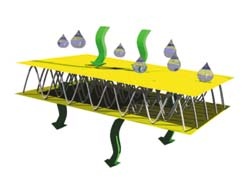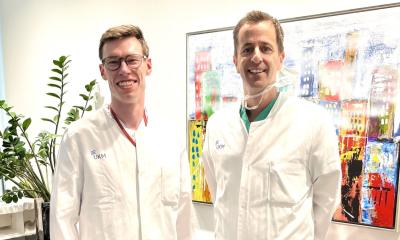3-D textiles reduce pressure ulcer risk in the OR
Pressure ulcers are a risk for patients undergoing long surgical procedures. Gel pads, widely used to reduce this risk, are considered to have two major disadvantages: they compromise the patient's thermo regulation by "sucking" warmth from the body and they do not provide sufficient pressure reduction for prominent body parts.

Re-usable 3-D spacer fabrics with thermo-regulating properties are being developed to overcome this and reduce the risk of developing post-surgery pressure ulcers. Spacer fabrics combine textile sheets with distance fibres made of monofilar polyester (Fig. 1). These structures are characterised by high permeability, pressure resistance and other custom-made features.
TITV Greiz, for example, specialises in the development and production of elastic 3-D textiles for use on or close to the skin. The structures (available in thicknesses up to 9 mm) feature soft and skin-friendly surfaces.
Research on the development of innovative functional 3-D textiles to prevent pressure ulcers during long surgical interventions indicated that spacer fibres reduce the pressure on prominent patient body parts by up to 25% (Fig. 2). Additionally, air between the two textile layers provides improved thermo regulation compared to gel pads. The re-usable textiles can be disinfected, washed and sterilised, and dirt can be removed, with detergents rinsed off according to hygiene regimes.
The textiles were tested
in the HELIOS Klinik Blankenhain. Ten custom-made operating theatre table pads were provided for use in traumatology/orthopaedics, general surgery and urology. The material was used primarily during long interventions (joint replacement, gastro-intestinal surgery, surgical removal of gastro-intestinal tumours and those in the urogenital tract) of up to six hours.
Overall, it was concluded that spacer fibres are well suited for the prevention of pressure ulcers during surgery, and: ‘One crucial advantage in terms of hygiene is the fact that these textiles do not release any fibres.’
28.10.2008










